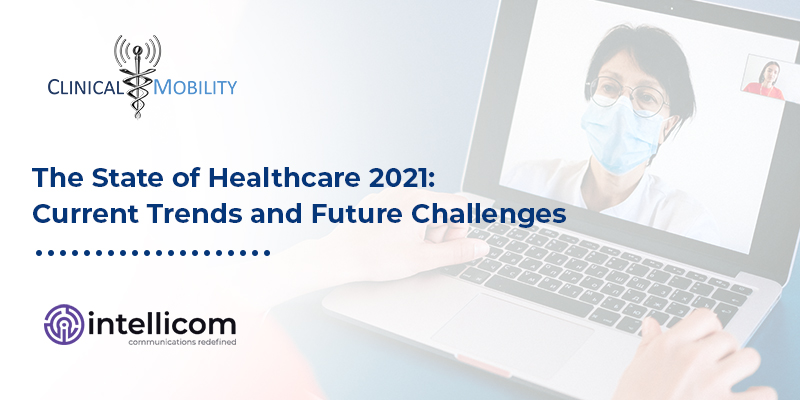Recent events have marked the beginning of a new era of business. To help shed a light on the current state of the healthcare industry, HIMMS and its Trust partners have shared relevant data and key takeaways with the objective to drive real progress in the healthcare sector.
Through a comprehensive analysis of twelve qualitative interviews, the team was able to identify three main areas of interest: digital health, artificial intelligence & machine learning, and financial health.
Digital Health Transformation in Healthcare
COVID-19’s health & safety measures - and the consequential overflow of healthcare facilities - have propelled a digital transformation in healthcare.
In the midst of high infection rates, phone and video appointments have provided patients with a safe option to seek medical attention. Not unexpectedly, digital healthcare communications are projected to outlive the pandemic. This is mainly because - as healthcare remains scarcely viable to many due to costs, wait times, and logistics - an estimated 71% of Gen Z and Millennials will continue to take advantage of this current digital health trend.
Despite the many benefits of telehealth, though, the unprecedented digital transformation sees the healthcare sector in a more vulnerable position. In the contemporary landscape, in fact, telehealth can raise some concerns as well as signal a need for increased regulations.
Whilst most healthcare providers include telehealth options in their service offerings, 51% of HIMMS State Of Healthcare 2021 respondents pointed to uncertainty regarding internal change management and reimbursement policies for no-shows/rescheduling. As 44% of patients claim they will change providers should their clinic suspend virtual appointments, industry leaders are considering improving their digital strategy in the mid-term.
Artificial Intelligence and Machine Learning: What Is AI in Healthcare?
For decades, artificial intelligence & machine learning have been the object of much speculation. Whilst pop culture goes as far as imagining a future governed by robots, the truth is these technologies are often in their very early developmental stages.
Based on the HIMMS survey, a majority of health systems (68%) plan to rely more on AI/ML in the near future. Currently, though, 70% of respondents are yet to implement a strategy to meet their enterprise goals.
Whilst this may not sound promising, the growing interest of clinicians in avant-garde technologies suggests opportunities for professional training. In fact, many professionals (52%) cite more accurate diagnostic reports among the major potential benefits of leveraging AI/ML.
As for patients, data suggests some hesitation in sharing their health data in fear of a “big brother” scenario. Notwithstanding, a vast majority of respondents would happily trade their data in exchange for more accurate detection, better treatment, and an overall improved patient experience.
In the coming years, the role of big data will be to provide real-time diagnostic, handling health records, and help treat patients with outstanding levels of care. For the time being, though, most providers are still limiting their AI/ML solutions to the Cybersecurity and fraud prevention fields.
Financial Health: Why Are Healthcare Costs Rising?
It is apparent that the perception of the status of financial health in 2021 is extremely fragmented and dependent on one’s professional role in the institution. For this reason, a thorough study of the different concerns and viewpoints is paramount to gain insight into the near future and create strategies to reduce healthcare costs.
Whilst the consensus lists the US aging population as the main reason for growing expenses, other factors also need to be considered. These include increased utilization and higher health and safety standards.
Moreover, the growing competition among hospitals and providers should also be taken into account, as should different fee-for-service vs value-based models. By value-based, we refer to a fairly new form of reimbursement linking care-delivery payments to the quality of care provided.
The good news is, despite noticing a spike in healthcare prices, most patients (70%) are still satisfied with the level of protection provided by their health insurance.
Conclusion
Unsurprisingly, healthcare has been among the most affected industries in pandemic times. As widespread digitalization and tech are bound to keep playing an important role, they also pose new challenges for the sector - namely costs, security, patient safety, ethics, and reliability among others.




Leave Comment